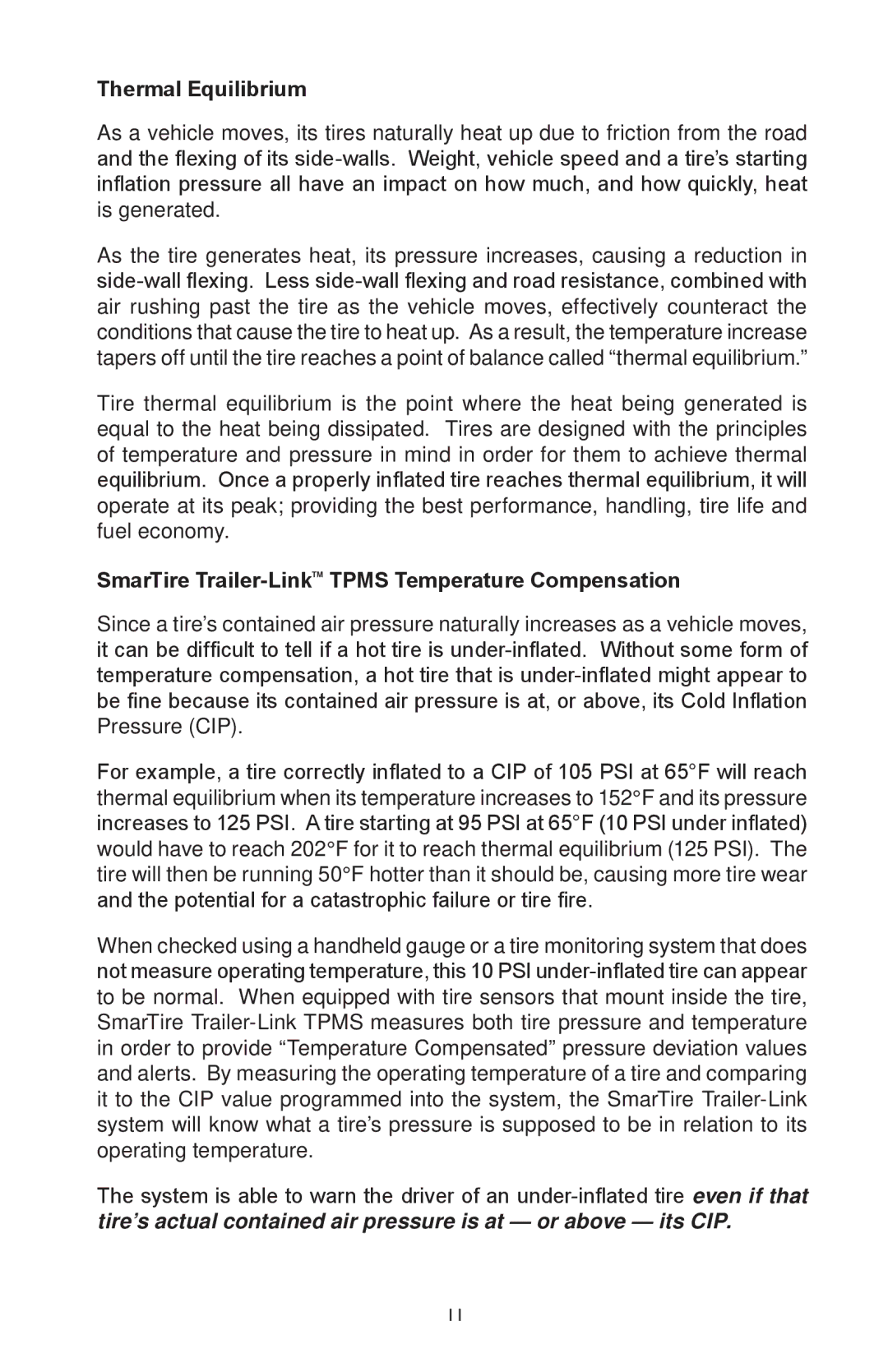Thermal Equilibrium
As a vehicle moves, its tires naturally heat up due to friction from the road and the flexing of its
As the tire generates heat, its pressure increases, causing a reduction in
Tire thermal equilibrium is the point where the heat being generated is equal to the heat being dissipated. Tires are designed with the principles of temperature and pressure in mind in order for them to achieve thermal equilibrium. Once a properly inflated tire reaches thermal equilibrium, it will operate at its peak; providing the best performance, handling, tire life and fuel economy.
SmarTire Trailer-Link™ TPMS Temperature Compensation
Since a tire’s contained air pressure naturally increases as a vehicle moves, it can be difficult to tell if a hot tire is
For example, a tire correctly inflated to a CIP of 105 PSI at 65°F will reach thermal equilibrium when its temperature increases to 152°F and its pressure increases to 125 PSI. A tire starting at 95 PSI at 65°F (10 PSI under inflated) would have to reach 202°F for it to reach thermal equilibrium (125 PSI). The tire will then be running 50°F hotter than it should be, causing more tire wear and the potential for a catastrophic failure or tire fire.
When checked using a handheld gauge or a tire monitoring system that does not measure operating temperature, this 10 PSI
The system is able to warn the driver of an
11
